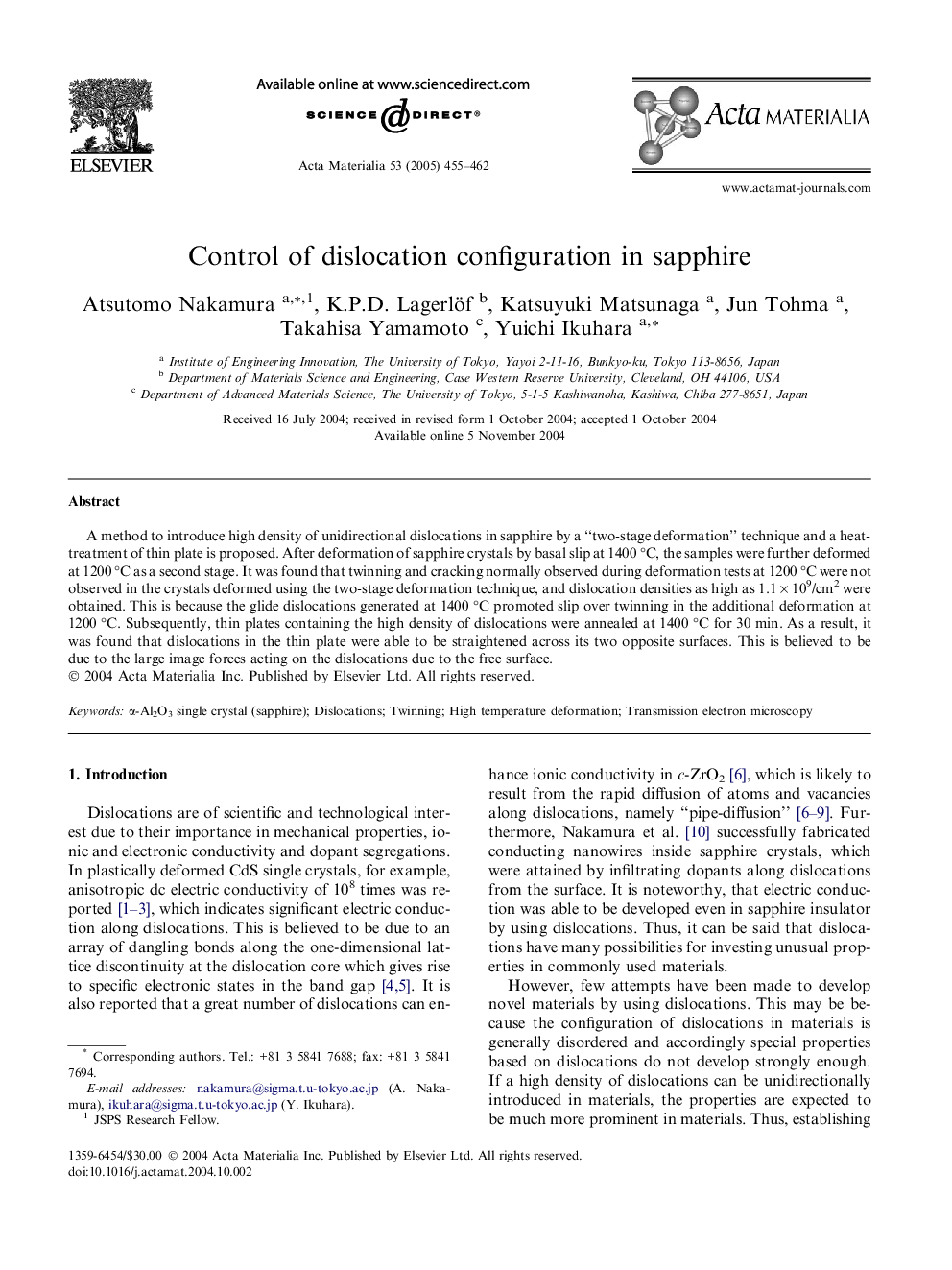| Article ID | Journal | Published Year | Pages | File Type |
|---|---|---|---|---|
| 10620972 | Acta Materialia | 2005 | 8 Pages |
Abstract
A method to introduce high density of unidirectional dislocations in sapphire by a “two-stage deformation” technique and a heat-treatment of thin plate is proposed. After deformation of sapphire crystals by basal slip at 1400 °C, the samples were further deformed at 1200 °C as a second stage. It was found that twinning and cracking normally observed during deformation tests at 1200 °C were not observed in the crystals deformed using the two-stage deformation technique, and dislocation densities as high as 1.1 Ã 109/cm2 were obtained. This is because the glide dislocations generated at 1400 °C promoted slip over twinning in the additional deformation at 1200 °C. Subsequently, thin plates containing the high density of dislocations were annealed at 1400 °C for 30 min. As a result, it was found that dislocations in the thin plate were able to be straightened across its two opposite surfaces. This is believed to be due to the large image forces acting on the dislocations due to the free surface.
Related Topics
Physical Sciences and Engineering
Materials Science
Ceramics and Composites
Authors
Atsutomo Nakamura, K.P.D. Lagerlöf, Katsuyuki Matsunaga, Jun Tohma, Takahisa Yamamoto, Yuichi Ikuhara,
